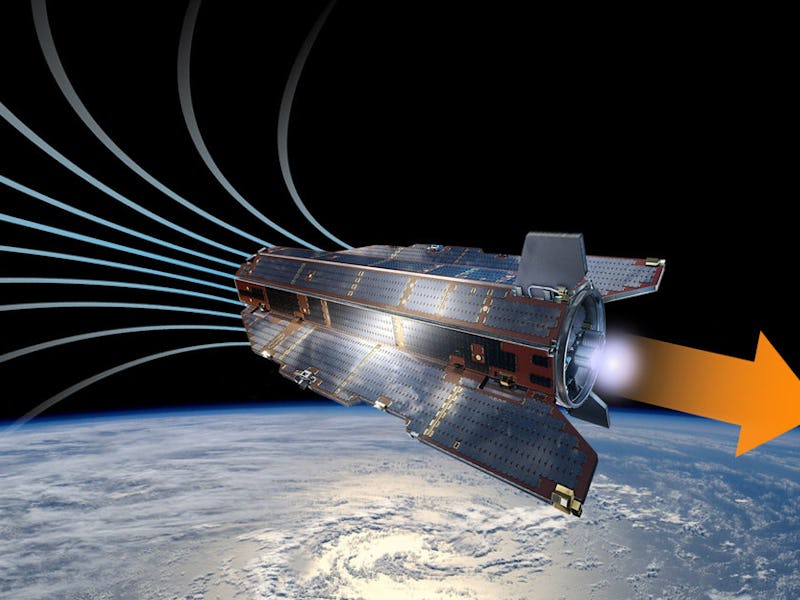ESA Just Cracked the Secret to Making Satellites Orbit for Years
This could be the "basis of a new class of missions."

There are well over 1,000 functioning satellites orbiting Earth at this very moment. Each one is retrofitted with high-tech gadgets to track all of the happenings up there in low-Earth orbit. But these marvels of modern-day innovation are limited by one pretty basic thing: fuel for their thrusters.
The European Space Agency has figured out a way to completely circumvent this issue by building and successfully testing a electric thruster powered by air molecules. ESA scientists say this invention could usher in a new era of satellite missions.
Join our private Dope Space Pics group on Facebook for more strange wonder.
“This result means air-breathing electric propulsion is no longer simply a theory but a tangible, working concept, ready to be developed, to serve one day as the basis of a new class of missions,” said Louis Walpot, an ESA researcher, in a statement.
Molecules of air at the top of the atmosphere are captured, then collected, and compressed to the point of becoming thermalised ionised plasma, at which point they can be given an electric charge to accelerate them and eject them to provide thrust.
This new engine was developed by Sitael — a privately-owned Italian space company — and has the ability to “breathe” in the scarce but usable supply of nearby atmospheric air molecules and use them to propel satellites for years on end.
The revolutionary electric thrust doesn’t require any complex parts or convoluted systems. All it does is collect and compress molecules, like carbon dioxide, that would have otherwise bounced away. Then it shoots out the compressed air to boost the craft forward.
Newer satellites will no longer have to carry reserves of xenon gas, a common fuel source for thrusters, making them lighter and longer-lasting.
Because these engines are able to function in regions where air is thin, the ESA claims they could be used for orbital missions outside of Earth. Mars’s atmosphere is known to contain carbon dioxide, which would be able to power these thrusters.
Once this new invention implemented spacecrafts could be in orbit for an indefinite amount of time. This would save scientists millions in construction costs and give them access to a constants stream of planetary data.